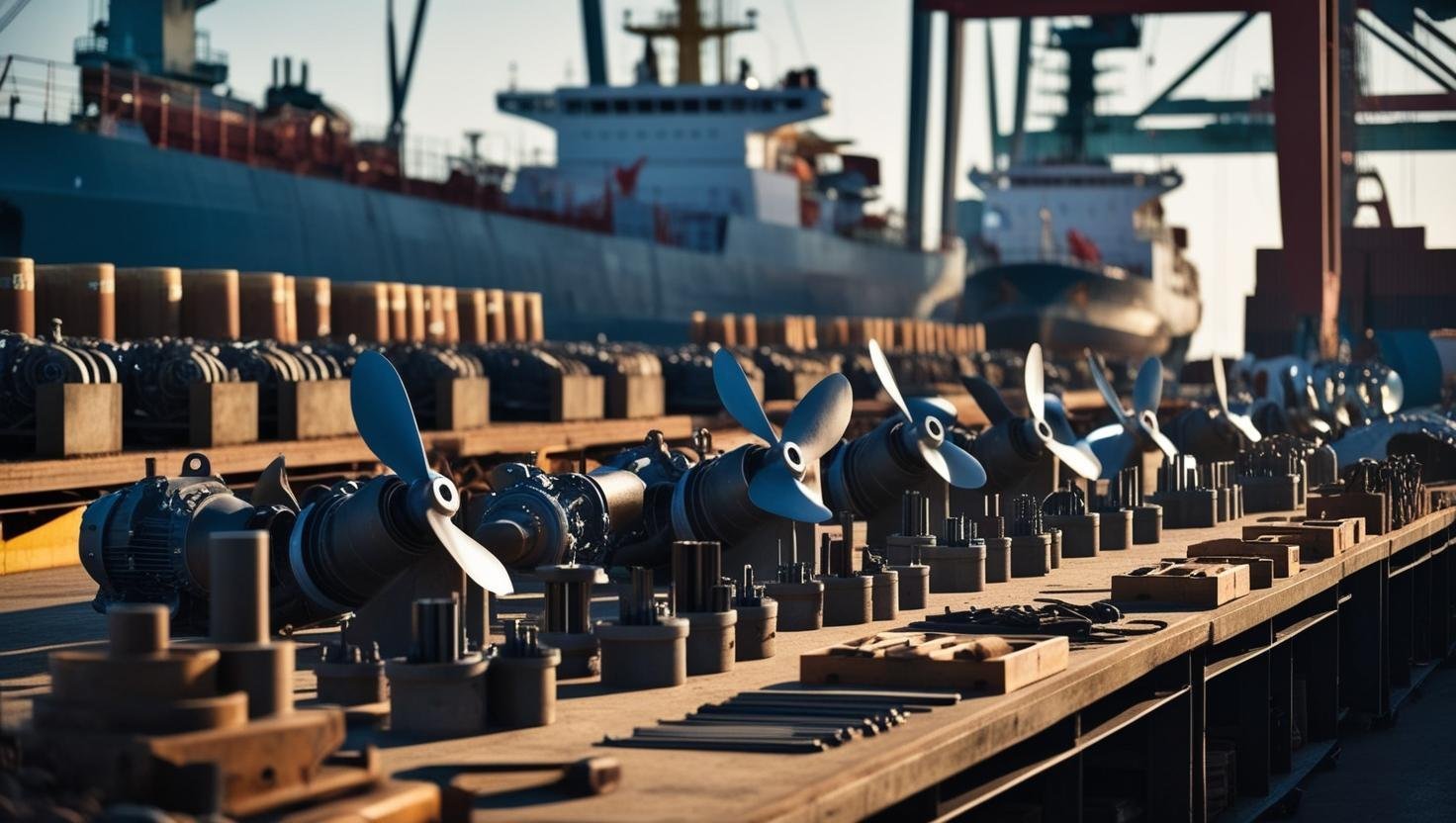Ship Spare Parts and Inventory Management: A Complete Guide for Efficient Marine Operations

Why Ship Spare Parts and Inventory Management Matter More Than Ever
Managing ship spare parts and onboard inventory is no longer just a routine task—it’s a strategic necessity. Without a robust system in place, delays, breakdowns, and compliance failures can cost thousands. For example, failing to track critical safety systems like the fire alarm control model series 8000 can risk both cargo and crew safety.
A recent report by Allied Market Research revealed that the global marine spare parts market will cross $14 billion by 2027, fueled by increased demand for automation and digitization in fleet operations. Ships need high uptime, especially in commercial and offshore operations, and well-managed spares are key to achieving that.
What is Ship Spare Parts and Inventory Management?
It refers to the planning, sourcing, storing, and usage tracking of spare parts used in vessels—from mechanical and electrical components to digital systems and emergency equipment.
Common Categories of Marine Spare Parts to Track
| Category | Examples |
| Engine Room Components | Fuel injectors, turbochargers, valves |
| Electrical Systems | Batteries, sensors, circuit breakers |
| Navigation Equipment | GPS units, radars, antennas |
| Safety Systems | Fire alarms, lifeboats, extinguishers |
| Hydraulic Equipment | Pumps, hoses, valves |
Top Challenges in Marine Spare Parts Inventory Management
Overstocking or Understocking
Holding too many spares ties up capital and space, while understocking can halt operations.
Poor Visibility Across Fleet
Without a centralized system, spare parts go untracked across multiple vessels.
Manual Record-Keeping
Paper-based logs or spreadsheets are prone to error and don’t scale.
Lack of Standardization
Inconsistent part naming or SKU tagging leads to confusion and duplicate inventory.
Inventory Management Solutions for Ship Spare Parts
1. Digital Inventory Management Tools
Use ERP or marine-specific software like AMOS, ShipManager, or custom-built solutions.
2. Barcode & RFID Tagging
Quick identification of parts using barcodes improves accuracy during audits or repairs.
3. Predictive Analytics
Using maintenance data to forecast which spares need replacing soon, thereby reducing downtime.
4. Centralized Database
Unify inventory data across vessels and ports, accessible in real-time by engineers and procurement officers.
Best Practices to Improve Spare Parts Management on Ships
- Standardize spare part naming conventions and catalogue them properly.
- Create minimum and maximum stock levels for each component.
- Regularly audit inventory to discard obsolete or expired items.
- Train ship crew and technical teams on updated systems and SOPs.
- Automate reorder triggers for critical spares like engines or marine spare parts.
Cost of Poor Inventory Management in Shipping
| Type of Loss | Estimated Impact |
| Emergency Equipment Downtime | $10,000+/incident |
| Compliance Failure Fines | $5,000 – $50,000 |
| Delayed Voyages | Up to $25,000/day |
| Lost or Expired Inventory | 15–20% annually |
Trends in Ship Spare Parts & Inventory (2024–2025)
- 70% of large shipping fleets in India are adopting cloud-based inventory tools.
- AI-driven inventory optimization is reducing stock wastage by up to 30%.
- Unplanned downtime dropped by 40% among ships using predictive inventory tracking systems.
- 🇮🇳 Surge in demand for bop spare parts supplier in India due to energy projects and offshore drilling expansion.
How to Choose the Right Marine Spare Parts Supplier
- Look for OEM-certified and ISO-compliant providers
- Ensure real-time stock visibility and delivery timelines
- Verify compatibility of parts with your vessel models
- Prioritize after-sales service and tech support
Trusted platforms like Ship Automation offer comprehensive product lines from sensors to hydraulic units, with quick delivery across Indian ports and custom clearance support.
Future of Ship Inventory Management: Automation & Sustainability
As ships become smarter and greener, spare parts inventory systems must evolve too. Future-ready systems integrate:
- Condition-based monitoring sensors
- Carbon footprint tracking per part
- Mobile app access for on-deck engineers
- Vendor performance benchmarking
Conclusion
Efficient ship spare parts and inventory management is vital for safe, cost-effective marine operations. By leveraging technology, following industry best practices, and sourcing from trusted suppliers, shipowners can optimize their fleet performance and reduce unexpected failures. Whether you’re managing an oil tanker, a container vessel, or a dredger, investing in smarter spare parts tracking can directly boost your operational efficiency.
People Also Ask (FAQs)
1. What is ship spare parts inventory management?
It is the process of tracking, storing, and maintaining spare components needed for ship operations and repairs, using manual or digital systems.
2. Why is inventory management important for ships?
It ensures operational continuity, regulatory compliance, and cost control by preventing part shortages or overstocking.
3. What tools are used in marine inventory management?
Popular tools include ERP systems like AMOS, barcode tagging, RFID systems, and cloud-based inventory software.
4. How can I avoid overstocking marine spare parts?
Set minimum and maximum thresholds, use automated reorder triggers, and monitor usage trends.
5. Where can I buy marine spare parts in India?
You can source genuine parts from Ship Automation, which offers a wide range of components including safety systems and BOP spare parts.

